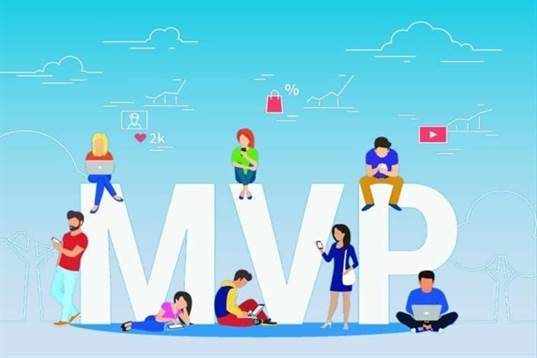What Are the Most Common Cloud Computing Service Delivery Models?
It is more secured than public clouds because their users are trusted users inside the organization. The costs are spread over fewer users than a public cloud , so only some of the cost savings potential of cloud computing are realized. Despite the name, it does not actually involve running code without servers.
Then the market started to boom around these cloud services, and many companies saw the potential and entered the market. Currently, although a few major players lead the market, none of them holds a market lock in terms of technology standards and features. There is still room for new emerging companies to make their mark in the cloud computing space. In PaaS, the customer uses a simplified interface to build, deploy, and control their own applications, without having to manage and configure the underlying cloud infrastructure. Specifically, a customer can run their own application code without needing to manage and configure servers, networks, operating systems, and storage.
Whether on AWS or Azure, DevOps done right helps you move fast and innovate. But what if DevOps were more accessible…
For the complete Program experience with career assistance of GL Excelerate and dedicated mentorship, our Program will be the best fit for you. Please feel free to reach out to your Learning Consultant in case of any questions. The course curriculum is created by experts that equip with industry-level skills to enhance your career.

The provider typically develops toolkit and standards for development and channels for distribution and payment. In the PaaS models, cloud providers deliver a computing platform, typically including an operating system, programming-language execution environment, database, and the web server. Application developers develop and run their software on a cloud platform instead of directly buying and managing the underlying hardware and software layers. With some PaaS, the underlying computer and storage resources scale automatically to match application demand so that the cloud user does not have to allocate resources manually.
When to choose PaaS
Cloud applications differ from other applications in their scalability—which can be achieved by cloning tasks onto multiple virtual machines at run-time to meet changing work demand. This process is transparent to the cloud user, who sees only a single access-point. To accommodate a large number of cloud users, cloud applications can be multitenant, meaning that any machine may serve more than one cloud-user organization.
- Look for disaster recovery features, server size, throughput of the network, and the general manageability requirements.
- The vendor controls the entire computing stack, which you can access through a web browser.
- Infrastructure as a Service , Platform as a Service , and Software as a Service all deliver varying levels of control and management.
- People with little or no developer experience (non-IT professionals or citizen developers) can leverage no-code/ low-code frameworks to quickly create scalable business applications that meet the changing industry demands.
It integrates with Nutanix Acropolis, Scale Computing HC3, and Azure Virtual Desktop. It supports various security protocols, including multi-factor authentication, client policies, granular filtering, and role-based access control, all from a centralized, single pane of glass. As for PaaS, your development team can concentrate on its core competency—developing the applications your cloud solutions and services organization needs with PCs connected to the internet. However, if your requirements change and you find yourself looking for a more suitable vendor, moving your applications over to another platform may not be easy. Thus, vendor lock-in can be an issue with PaaS, just as it is with SaaS. SaaS offers flexible, bulk pricing models that are often much lower than individual licenses.
Disadvantages of IaaS
Cloud helps create more seamless business solutions by integrating your applications, deployments, and networks. It provides numerous opportunities to design and https://www.globalcloudteam.com/ deliver new digital services for your customers and employees. Cloud enables your business to respond quickly to the changing needs during periods of disruption.

It allows them to use powerful business tools without upgrading hardware or manually updating software. That means everyone has access to the most up-to-date version at all times. Anything-as-a-Service is yet another service model, which includes Network-as-a-Service, Business-as-a-Service, Identity-as-a-Service, Database-as-a-Service, and Strategy-as-a-Service.
List the disadvantages of the private cloud model?
The business plan foresaw that online consumer file storage would most likely be commercially successful. As a result, Compaq decided to sell server hardware to internet service providers. Statista reports that in 2021, the total global spending on public IT cloud services amounted to almost 409 billion USD. The largest spending segment was Software as a Service , with an approximate annual revenue of 249 billion USD. More legacy business applications are getting replaced with data-driven SaaS applications, ideal for modern cloud architectures.

In this article, I want to decomplexify the terminology and explain the models, the advantages of cloud computing and of using multiple clouds, and the benefits of doing so. Cultural and cloud governance issues are vital facts facing an organization using this trend of technology. Especially when a new technology trend in business performance is implemented or such a change requires updating governance, security, and management policies, its user acceptance and cultural reform must be properly aligned. Public cloud providers include AWS, Google Cloud Platform, Microsoft Azure, who charge for the use of cloud resources. Service Models are the reference models on which the Cloud Computing is based. The services provided by vendors can be classified in three models that actually depict how services are being provided to the customers.
What are the Different Service Models of Cloud Computing?
Platform as a Service is a cloud computing model that delivers applications over the internet. In a PAAS model, a cloud provider delivers hardware and software tools, usually those needed for application development, to its users as a service. A PAAS provider hosts the hardware and software on its own infrastructure. As a result, PAAS frees users from having to install in-house hardware and software to develop or run a new application.
Finally, choose the model that aligns best with your business objectives. A recorded 30-minute demonstration showing the value our customers receive from day one. Needs to secure login credentials to avoid unauthorized access to the software. Allows companies to supplement in-house resources for specific projects. PaaS is simple and very much convenient for the user as it can be accessed via a web browser. The overall Analysis of these models with respect to different factors is described below.
Cloud Management Technology
Physical control of the computer equipment is more secure than having the equipment off-site and under someone else’s control . This delivers great incentive to public cloud computing service providers to prioritize building and maintaining strong management of secure services. Some small businesses that don’t have expertise in IT security could find that it’s more secure for them to use a public cloud. This is important now that cloud computing is common and required for some services to work, for example for an intelligent personal assistant (Apple’s Siri or Google Assistant). Fundamentally, private cloud is seen as more secure with higher levels of control for the owner, however public cloud is seen to be more flexible and requires less time and money investment from the user. Another example of hybrid cloud is one where IT organizations use public cloud computing resources to meet temporary capacity needs that can not be met by the private cloud.



